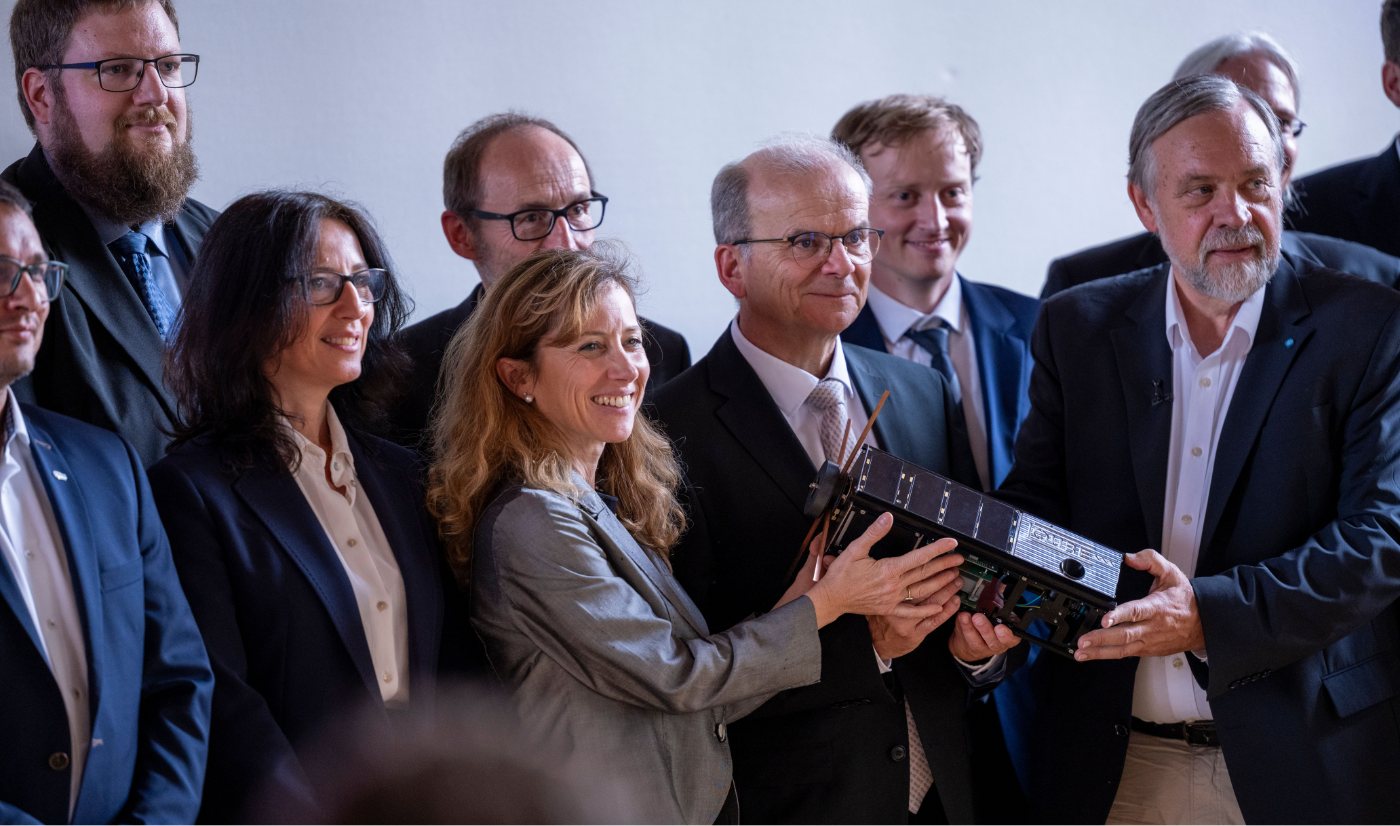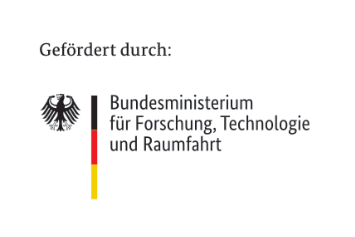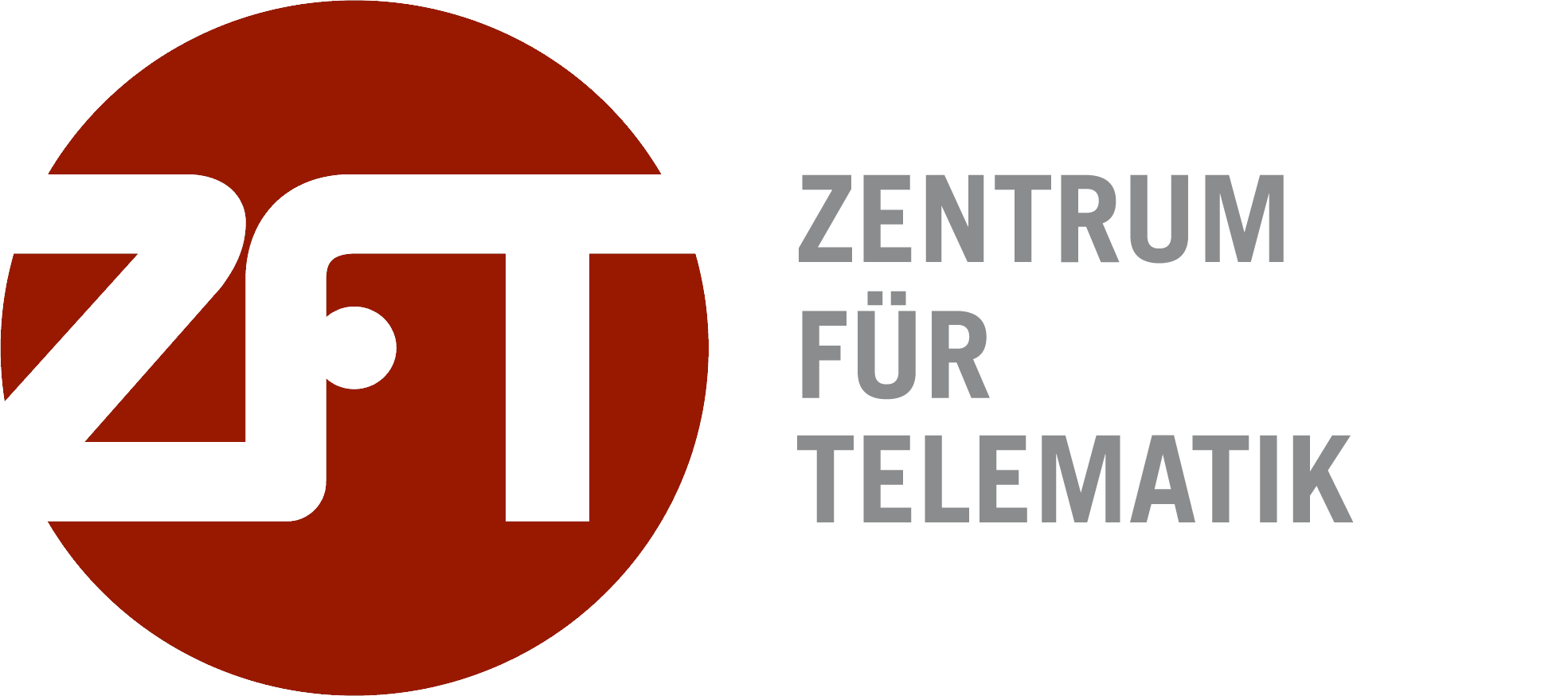Commissioning of the Quantum Modules of the Small Satellite QUBE
25.07.2025
After the arrival of the random numbers from space, the QUBE consortium celebrates with the client Federal Ministry for Research, Technology, and Space (BMFTR): (from left to right) LMU Vice President Prof. Dr. Francesca Biagini, Quantum researcher Prof. Dr. Harald Weinfurter (LMU), BMFTR State Secretary Dr. Rolf-Dieter Jungk, Satellite expert Prof. Dr. Klaus Schilling (Zentrum für Telematik) Photo: LMU Munich
The research mission QUBE, funded by the Federal Ministry for Research, Technology, and Space (BMFTR), for which researchers of the Zentrum für Telematik have designed and built the satellite, will for the first time test newly developed quantum communication technologies using small satellites in space. This lays the foundation for ensuring secure, worldwide data transmission in the future. Dr. Rolf-Dieter Jungk, State Secretary in the BMFTR, officially commissioned the first German research satellite.
In quantum key distribution, a secret bit sequence, the key, is generated by exchanging very weak light signals. With the keys thus obtained between the satellite and several ground stations, global, secure communication can be carried out. QUBE is the first European small satellite in space to test and further develop new components for quantum key distribution. QUBE is the size of a shoebox and weighs only 3.5 kg. This was made possible by new miniaturization technologies, both for the satellite as well as for the quantum payloads and the laser communication terminal.
Miniaturized Quantum Experiments under Extreme Conditions
After years of research, the time has finally come: The interdisciplinary QUBE consortium recently achieved an optical connection between the satellite and the ground station. During the pass at an altitude of 480 km, the attitude control system must align the satellite with the ground station to precisely target the receiver mirror with a diameter of 80 cm using the laser onboard the small satellite. This alignment must be maintained despite a speed of about 27,500 km/h during the entire pass for approximately 10 minutes. “The attitude control system achieves peak accuracy and alignment stability for satellites of this size,” says ZfT board member Prof. Dr. Klaus Schilling. For optical communication, DLR project manager Benjamin Rödiger also sees this demonstration as an important success: “The light beam from the satellite could be tracked for several minutes. This proves the excellent interplay of the attitude control with the precise regulation of our laser terminal and the optical ground station.”
“This is really a milestone; now the work with the quantum modules can begin,” says Harald Weinfurter, Professor of Experimental Quantum Physics at Ludwig Maximilians University Munich (LMU). “Our miniaturized quantum random number generator and all other components for quantum communication were designed to remain fully operational even under the extreme vibrations, temperature, and radiation stresses during launch and in space,” explains Prof. Dr. Christoph Marquardt, Chair of Optical Quantum Technologies at FAU. The experience gained will be used in the construction of the second satellite, QUBE-II. “This satellite is more than twice as large. Thanks to improved optics and expanded quantum modules, secure key exchange can now be carried out,” says Janko Janusch, project manager at OHB and coordinator of the second phase of the QUBE initiative. QUBE-II is set to launch in the summer of 2026.
Links
Social Media
- 🔗BMFTR on Instagram
- 🔗BMFTR on LinkedIn
- 🔗LMU Munich on Instagram
- 🔗LMU Munich on X
- 🔗LMU Munich on Facebook
- 🔗Christoph Marquardt on LinkedIn
Partner Websites
Further information on our web pages
Funding
The funding is provided by the BMFTR




